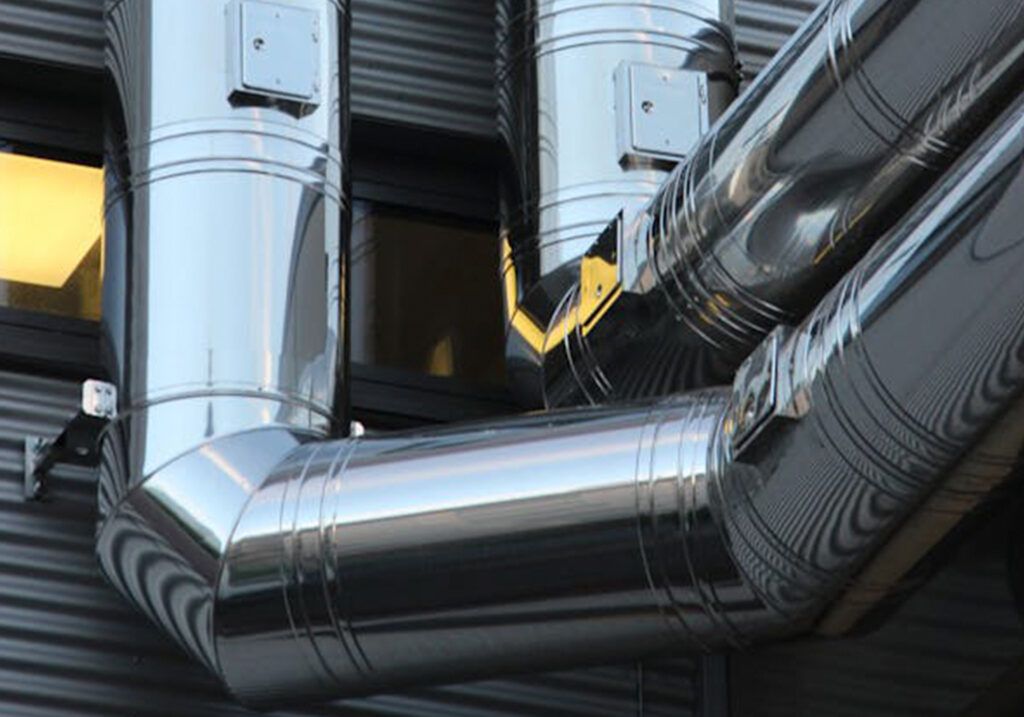Industrial steel buildings have become a cornerstone of modern construction. This is because of their strength, durability, and versatility. These structures are commonly used for warehouses, factories, distribution centers, and storage facilities.
While they are built to last for decades, there may come a time when renovations are necessary to improve functionality, aesthetics, or energy efficiency. Many business owners and property managers wonder if an industrial steel building can be successfully renovated. The answer is yes.
Renovating an industrial steel building is not only possible but often a cost-effective alternative to new construction. Whether you want to modernize the facility, increase energy efficiency, or repurpose the space, steel buildings provide a flexible framework that can be adapted to meet new demands. With the right planning, materials, and professional expertise, a steel building can be upgraded to align with current industry standards and business requirements.
In this article, we will explore the feasibility of renovating industrial steel buildings, the various types of renovations that can be done, and the benefits of upgrading an existing steel structure instead of constructing a new one. We will also discuss challenges, costs, and best practices to ensure a successful renovation project.
Why Renovate an Industrial Steel Building?
Extending the Building’s Lifespan
Industrial steel buildings are known for their longevity, but over time, exposure to the elements and daily wear and tear can take a toll. Renovating can address structural issues such as rust, corrosion, and weakened joints. By reinforcing the building’s framework, replacing deteriorated components, and applying protective coatings, the lifespan of the structure can be extended by several decades.
Improving Energy Efficiency
One of the main reasons businesses choose to renovate their steel buildings is to improve energy efficiency. Older buildings may have inadequate insulation, outdated HVAC systems, and inefficient lighting. By upgrading insulation, installing energy-efficient windows and doors, and incorporating solar panels or LED lighting, businesses can reduce energy consumption and lower operating costs. Energy-efficient buildings also contribute to sustainability efforts and help companies comply with modern environmental regulations.
Reconfiguring the Interior Layout
Business needs evolve over time, and an industrial building’s interior layout may need to be modified to accommodate growth or changes in operations. Renovations can involve adding office spaces, partitions, mezzanines, or additional storage areas. Upgrading flooring, installing new machinery, and enhancing ventilation systems can also optimize workflow and employee productivity.
Common Renovation Projects for Industrial Steel Buildings
Structural Reinforcement and Repairs
Over time, an industrial steel building may experience structural wear, especially in areas with extreme weather conditions. Strengthening the frame, replacing damaged support beams, and repairing corroded panels can improve the integrity of the building. Reinforcing foundations and upgrading anchoring systems can also enhance stability.
Roof Replacement or Upgrades
The roof is one of the most important components of an industrial building, protecting it from the elements. If the roof is leaking, rusting, or sagging, it may need repairs or a full replacement. Modern roofing materials, such as standing seam metal panels and insulated roofing systems, can improve durability and energy efficiency.
Adding Insulation and Climate Control
Older industrial buildings may lack proper insulation, leading to excessive heating and cooling costs. Retrofitting the building with high-quality insulation materials, such as spray foam or insulated metal panels, can regulate indoor temperatures and reduce energy expenses. Upgrading HVAC systems and ventilation can also enhance climate control, improving working conditions for employees.
Expanding or Modifying the Building’s Size
Business growth may require additional space, and instead of constructing a new facility, expanding an existing industrial steel building can be a more affordable solution. Extensions can be added to the sides or roof to increase square footage. High-clearance buildings may also allow for mezzanines or additional floors to maximize space usage.
Upgrading Exterior Aesthetics
A dated industrial building can benefit from exterior renovations to enhance curb appeal and create a modern look. Repainting, installing new siding, and adding architectural elements such as awnings or glass facades can improve the building’s appearance. A refreshed exterior can also help attract customers, tenants, or investors.
Challenges of Renovating Industrial Steel Buildings
Structural Limitations
While steel buildings are flexible in design, some older structures may have limitations that make renovations more complex. If the original framework is too weak or not designed for expansion, additional reinforcements may be required, increasing costs and labor. A professional structural assessment is necessary to determine the feasibility of renovations.
Compliance with Building Codes
Renovations must comply with local building codes and regulations, which may have changed since the building was originally constructed. Upgrading to meet fire safety standards, accessibility requirements, and energy efficiency mandates can add to the overall renovation costs. Working with experienced contractors and architects can help ensure compliance.
Budget Constraints
Renovations can be costly, especially if major structural modifications are needed. Business owners should carefully plan their budget, prioritizing critical upgrades while finding cost-effective solutions. Getting multiple quotes from contractors and seeking financing options can help manage expenses.
The Cost of Renovating an Industrial Steel Building
Factors Affecting Renovation Costs
The cost of renovating an industrial steel building varies depending on several factors, including the size of the building, the extent of the renovations, and the materials used. Other factors such as labor costs, location, and the condition of the existing structure also play a role.
Ways to Reduce Renovation Costs
Planning renovations in phases is a smart approach to managing costs effectively. Instead of undertaking all upgrades at once, spreading them out over time allows businesses to allocate budgets more efficiently without straining financial resources. Prioritizing essential repairs first, such as structural reinforcements or roof replacements, ensures that the most critical aspects of the building are addressed before moving on to aesthetic or functional improvements.
Another cost-saving strategy is to reuse existing materials whenever possible. Salvaging structural components, metal panels, or insulation can significantly reduce expenses while minimizing waste. Instead of purchasing brand-new materials, businesses can repurpose elements from the existing structure or source reclaimed materials, maintaining quality while lowering renovation costs. This approach not only saves money but also contributes to sustainable building practices.
Working with experienced contractors who specialize in steel buildings is crucial for avoiding costly mistakes and ensuring efficient renovations. These professionals understand the unique characteristics of metal structures and can recommend the best solutions for upgrades. Additionally, considering energy-efficient improvements, such as better insulation, LED lighting, or solar panels, can lead to long-term savings. Many of these upgrades qualify for tax incentives or government rebates, further offsetting renovation costs while improving the building’s overall efficiency.
Best Practices for a Successful Renovation
Conduct a Thorough Inspection
Before starting any renovations, a detailed inspection should be conducted to assess the condition of the building. This includes checking for rust, structural weaknesses, roof leaks, and insulation gaps. A professional engineer or contractor can provide insights into necessary repairs and potential challenges.
Develop a Clear Renovation Plan
Having a well-structured renovation plan ensures that the project stays on track and within budget. The plan should outline the scope of work, estimated costs, timeline, and materials required. Setting clear priorities, such as addressing structural issues first before focusing on aesthetics, can help streamline the renovation process.
Hire Experienced Professionals
Working with contractors who specialize in industrial steel buildings can make a significant difference in the quality and efficiency of the renovation. These professionals understand the unique challenges of steel construction and can recommend the best materials and techniques for the project.
Ensure Compliance with Regulations
Before proceeding with renovations, business owners should check with local authorities regarding building permits and compliance requirements. Failure to adhere to regulations can lead to costly fines or project delays. Consulting with architects or engineers familiar with zoning laws can help navigate these challenges.
Conclusion
Renovating an industrial steel building is a practical and cost-effective way to extend its lifespan, improve efficiency, and adapt to evolving business needs. Whether the goal is to upgrade insulation, expand the space, or enhance aesthetics, steel buildings offer the flexibility to accommodate various renovations. While there are challenges, such as structural limitations and compliance with modern building codes, careful planning and professional expertise can ensure a successful renovation project.
For businesses looking to modernize their facilities without the high cost of new construction, industrial steel building renovations provide a viable solution. With proper maintenance and timely upgrades, these structures can continue serving their purpose for many years to come.

